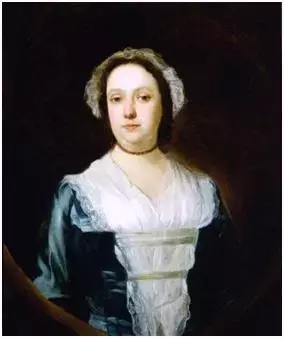KEABLE, William
William Keable or Keeble was baptised at Cratfield, Suffolk on 1 October 1715, son of John and Ann Keable. A moderately successful painter of portraits and small conversation-pieces, and a member of St Martinís Lane Academy in 1754. He was patronised by several American Colonists travelling in London, particularly from Charleston, South Carolina. Two of these works, the 1749 portraits of Mrs Benjamin Smith (1722-1760) and her brother-in-law Thomas Smith Jr (1719-1790), were exhibited in the Gibbes Museum of Art, Charleston 1999 exhibition, In Pursuit of Refinement-Charlestonians Abroad 1740-1860, which show the important transfer of artistic taste from mid-eighteenth-century England to the Americas. William produced several charming, small full lengths in the manner of Francis Hayman (1708-1776) and Arthur Devis, although he also painted large scale pieces. An amateur musician as well as a painter and his role as the flautist in Gainsborough's painting, implies that he served Charles Crokatt (died 27 April 1769) and Peter Darnell Muilman (born 9 April 1730) as a music master and perhaps also taught them drawing and Keable may have become acquainted with Gainsborough through artistic circles in Suffolk, or musical ones, such as the Ipswich Musical Club, since Gainsborough was himself a talented amateur musician. It was through a lack of ready patronage that Keable had left to settle in Italy by 1761, where he painted a portrait of Castruccio Bonamici Gandolfini, becoming a member Accademico della Clementina in 1770. Keable was buried at Livorno, Tuscany on 12 January 1774. A label on the back of the stretcher of this conversation piece states that Keable painted the figures and Gainsborough the landscape, although this view has long been disregarded by most Gainsborough scholars.
Keable is the central figure playing the flute
Works by This Artist

|
Portrait of a gentlemanOil on canvas
|

|
Mrs. Benjamin Smith (Anne Loughton)Oil on canvas
|